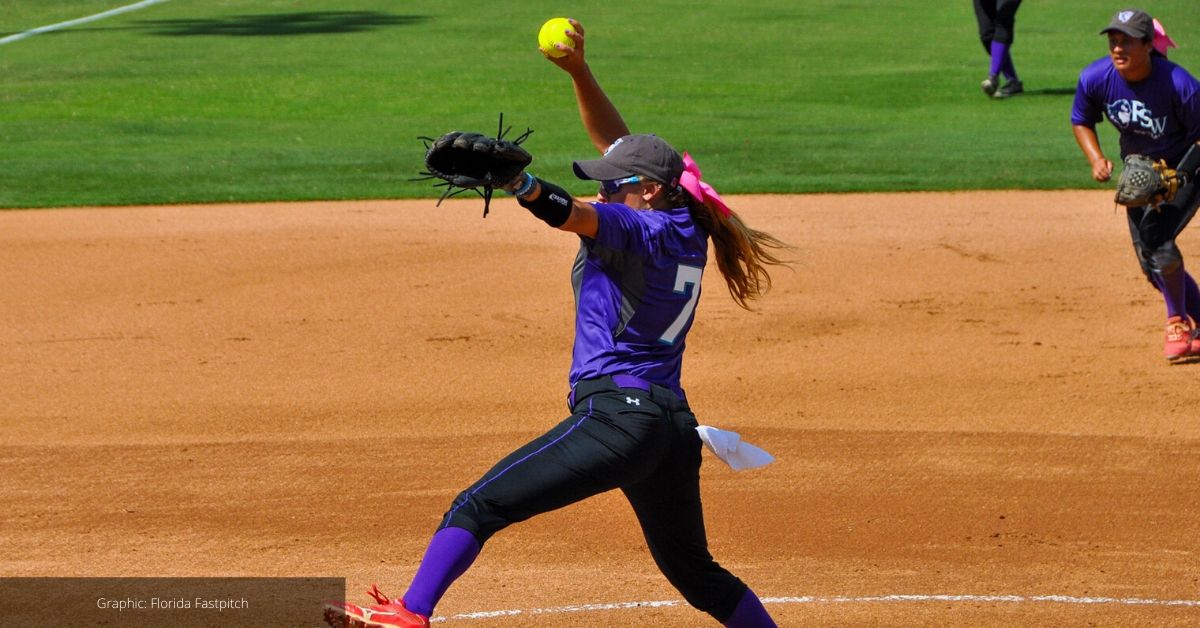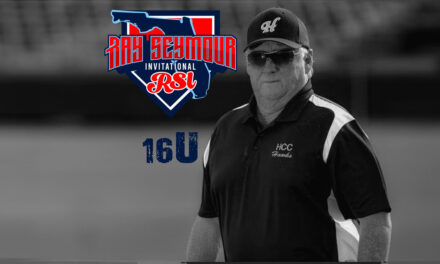Sara Moulton is a DI All-American and NPF Champion and is now an instructor at her academy.
As a pitching instructor, it’s my job to point out the things I notice my pitchers doing incorrectly and find a way to teach them the correct way. Another thing I try to do as a pitching coach is to get my pitchers to understand and make their adjustments on their pitches. It’s a tough task to try and focus on pitching mechanics during a game. I tell my pitchers that’s what individual practice and lessons are for. Everything we do outside of the lines will carry over to game days because muscle memory should take over. We practice how we are going to play, so learning the correct way, buying in, and practicing doing things right will set up a pitcher for success on game days.
Even though I make it clear to my pitchers that I don’t want them to worry about mechanics on game days, there may be times when something is off, and attention needs to shift back to basic mechanics. Let’s think about the most common ways to miss a pitch. Too high, too low, also inside, and too outside are the most common balls thrown. Sometimes we throw a crazy pitch that we weren’t sure what happened on, let’s forget about those unless we see them occur more frequently.
If you find yourself missing multiple pitches in the same direction on game days, consider adjusting. Below are the most common spots missed by a specific mechanical flaw and the quick and easy way to correct it. If you aren’t able to focus on feeling the adjustment being made with the batter standing in the box, I recommend throwing a few pitches to a catcher in between innings or taking advantage of those precious warm-up pitches before the batter steps in the box when the inning begins.
High: A familiar spot for pitchers to miss, especially as they get tired. A high miss can occur because of two reasons. The first being the release point. If a pitcher holds on to the ball for too long and passes the back hip release point, the outcome of their pitch is going to be high. Telling yourself to release sooner or by the back hip is an easy fix. The second reason for a high pitch could be the pitcher bending over at her waist when she pitches. If this happens, the pitcher leans forward and then often jerks everything up to correct the flaw without even realizing it. To fix, work on getting bigger with the arms in the “K” position or think about standing taller. Fill the chest up with air and puff it out, there won’t be any bending over.
Low: We have all thrown a pitch or two low and out of the strike zone. If you find yourself consistently missing low, focus back on the release point. A low pitch typically occurs because the ball is released too early. To correct, focus on finding a consistent release point. The back hip is a great reference point for an inconsistent release.
Right: If the pitcher is right-handed and misses too far right, or inside to a right-handed batter, a few things could be happening. The most common issue when this happens is the back hip getting in the way of the arm. Unfortunately, we can’t throw through our hip. If you notice yourself making contact with your hip, work on staying open on your power line. Staying open will allow the arm to come through without anything getting in the way. The second reason for missing too far right for a right-handed pitcher is the pitching arm going behind the body through the pitch. Sometimes pitchers “over-open,” and their arm will go behind them. The brain picks up on this and knows not to make contact with the hip that’s in the way, so it will make its own room and move the arm out even further away from the body. Work on “T” and “K” drills from an open position to make this correction.
Left: If you are a right-handed pitcher and find yourself missing to the left or the outside corner to a right-handed batter, I would bet that it has to do with the glove flying out. When the glove flies out to the left, off the power line, and away from the body, it’s going to pull the throwing arm. The arms move together, and if the glove goes flying to the left, the throwing arm is going to do the same. To correct, work hard on drills from an open position on the power line and keep the glove on that line and close to the body.
Pitchers can make some of these adjustments during games. The release point on high and low misses may be more natural to correct than the hip getting in the way or the glove flying out. Take the time to do individual pitching practices so that you can keep up with proper mechanics. Good mechanics lead to good pitches and a consistent pitcher who throws strikes.







